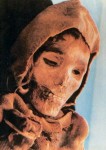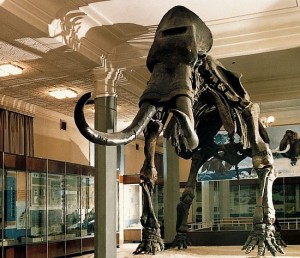Archive for the ‘China’s Museums’ Category
Xinjiang Uighur Autonomous Region Museum
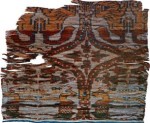 The Xinjiang Uighur Autonomous Region Museum was established in the spring of 1953 in the People’s Park in Urumchi City. A new museum was later built in 1962 at a new site on Xibei Lu. The building occupies a space of 11,000 square meters and is built in a modern style enhanced by local architectural features. The central dome is thirty meters high and from its height one can view the entire city of Urumchi.
The Xinjiang Uighur Autonomous Region Museum was established in the spring of 1953 in the People’s Park in Urumchi City. A new museum was later built in 1962 at a new site on Xibei Lu. The building occupies a space of 11,000 square meters and is built in a modern style enhanced by local architectural features. The central dome is thirty meters high and from its height one can view the entire city of Urumchi.
The Silk Road derived its fame from silk. The Xinjiang Uighur Autonomous Region Museum has also become famous for its rich collections of silk artifacts from many periods of history. Brocades from Eastern Han are highlighted, as well as all kinds of specialized silk-woven items from the height of the Tang. These are as lustrous and beautiful today as when they were new and display weaving techniques that were highly refined many hundreds and even thousands of years ago. These are regarded as unique treasures by textile authorities and art historians around the world. A number of the articles on display here are the earliest extant examples of certain weaving technologies in China.
The Xinjiang Autonomous Region has long been a crossroads for many different kinds of people. Their diversity of scripts and cultures is exhibited in this museum through archaeological material, including documents in some twelve different scripts with a particularly large number from the Han-dynasty finds at Turfan. The documents cover military, economic, cultural, and political affairs. Clay or terracotta sculptures are also featured in the Xinjiang Museum. Among these are single-humped Central Asian camels, fat and vigorous Yuan-dynasty horses, women figurines in all postures, impressively fierce soldiers, and so on. These were sculpted in a most natural and vigorous way and have been preserved as a result of Xinjiang’s arid climate. The Xinjiang Museum has several dozen original Tang-dynasty paintings. Although these are not from the hands of famous painters, they still exhibit the vital Tang spirit. They include such subjects as women playing weiqi go or Chinese chess, children frolicking, ‘eight steeds,’people dancing and so on. Other items in the collections include microliths, silver works of art, stone stelaes, coins and currency, ceramics, wooden articles. Of particular note are various foods from the Tang dynasty which, through the arid conditions, have been preserved over the passage of more than one thousand years.
In a similar vein, certain dessicated human corpses, called mummies although they were not treated with chemicals, are kept in the Xinjiang Museum. Some of these date back to 4,000 years ago. They are the earliest known such examples in China and are important in the study not only of humankind but of ethnic composition in this region at the time. Also in the museum are an Eastern-Han couple, buried together and well preserved, and a corpse from the Tang dynasty with well preserved skin and hair.
Presently, the museum opened new exhibits called the Xinjiang History Exhibition and the Xinjiang People’s Customs Exhibition. The history exhibit shows the history of Xinjiang by using material from its rich collections and highlighting material from recent archaeological discoveries. The Customs exhibition introduces the customs and cultural lifestyles of twelve different ethnic groups in Xinjiang, including the Uighur, Kazakh, Mongolian, Kirgiz, Hui, Tajik, Uzbek, Russian, Tatar, Daur, Xibo, and Manchu.
Address: Xinjiang Uighur Autonomous Region, Urumchi, Xibei Road, #132
Mote info about China’s Museum, please visit here:
Inner Mongolia Autonomous Region Museum
This museum was founded on the occasion of the tenth anniversary of the establishment of the Inner Mongolia Autonomous Region, in 1957. The building, expressive of local minority characteristics, is located at the intersection of Xinhua Dajie and Zhongshan Lu in the heart of Hohhot City, the capital of the autonomous region.
Shenyang Palace Museum
The Shenyang Palace Museum is located at thecenter of Jing-zi Dajie Center in Shenyang City, Liaoning Province. It covers 60,000 square meters and is a history museum with collections and exhibits that deal mainly with Qingdynasty art and artifacts. Formerly called the Fengtian Palace Museum, then the National Shenyang Museum, in 1954 it was officially renamed the Shenyang Palace Museum. In 1961, the State Council placed it among the ranks of National Key Cultural Relics Protected Units. The permanent exhibits of the museum are divided into two parts, one showing historical artifacts of the court and the other showing Qing-dynasty arts and crafts.
The Shenyang Palace Museum is the only well preserved group of ancient palace buildings in the country except for the Beijing Palace Museum. The complex is divided into three parts, the Eastern Way, the Central Way, and the Western Way. The architecture of the main building of the Eastern Way is characteristic of a horse riding arrow-shooting people who used tent palaces; this Dazheng Hall once hosted tremendous ceremonies.
The main building of the Central Way was where the emperor held daily meetings with his court to conduct governmental affairs and receive ministers. Inside, objects are arranged as they were during the Qianlong period. Inside a separate hall to the west are objects used by the emperors Qianlong and Jiaqing as these two emperors made their long investigative trips through the country.
On the western side of the Shenyang Palace Museum are riding grounds where horses were kept and trained, also a pavilion in which the emperor watched plays when he did his ‘eastern sojourn.’ There is also a reconstruction of a Ming-dynasty pavilion from Ningbo, which is one of the seven halls in the Qing dynasty to receive a copy of the famous Yongle-period encyclopedia known as the Siku Quanshu, or the Four Warehouses of All Knowledge.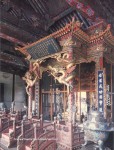
Most of the Shenyang Palace Museum collections of documents and artifacts date from the Qing dynasty, though some are from the Ming. Many are of interest for their historical value but some are of great artistic value as well, such as paintings by Dong Qichang (1555-1636), a famous Ming painter and calligrapher. Some of the more representative treasures that have been exhibited from the collections of the Museum are Qing-dynasty weapons, musical instruments, palace accouterments, ceramics, carvings, textiles and embroideries, lacquer ware, and amber.
Address: Liaoning Province, Shenyang City, Shenhe District, Shenyang Road, #171
Zhouyuan Bronze Museum
Address: Shaanxi Province, Baoji City, Fugang County, Famen Town, Zhaochen Village
Zhaochen Village
Zhouyuan is an ancient region with more than 3,000 years of history. It is located in the western part of the Guanzhong Plain of Shaanxi Province and includes one of the capitals of the early period of the Zhou Dynasty. In history it is known as ‘Qi Zhou.’ The cultural relics both on and below ground are especially rich, and the large quantity of bronzes excavated here are world famous. In 1982, this was declared by the State Council to be a National Important Cultural Relics Protected Unit.
The Zhouyuan Museum (Chinese bronze artworks from Zhouyuan Bronze Museum) was built on the foundation of the excavation of the Zhouyuan site. It was formerly the site of two cultural relics Protection and Management Institutes called Zhouyuan Qishan and Fugang. In 1986 these were combined to become the Zhouyuan Museum which is located in Fugang County, Famen Town, Zhaochen Village. The Zhouyuan Museum’s existing exhibitions are divided into inside and outside components. The outside exhibitions are mainly the Village Ancestral Temple and the Zhaochen Village Palace, a large-scale architectural grouping. These provide a valuable resource for researching Western Zhou architecture and technology, and the political, economic and cultural systems of the court at that time. These fill what had been a void in ancient Chinese architectural history.
The inside exhibitions mainly include the Zhouyuan Excavated Relics Exhibit, the Zhouyuan Historical Cultural Relics Exhibit, Western Zhou Calligraphy and Arts Exhibit, Western Zhou Wine-Culture Exhibit, and the special exhibit at Famensi Temple which is called the Zhouyuan Precious Cultural Relics Special Exhibit. These exhibits display the some 3,000 items excavated at the Zhouyuan site, including bronzes, jades, bone, ceramics, augury tortoise shells, augury bones, and so on. In the exhibition, people c an enjoy bronzes from three thousand years ago such as one that has 284 characters inscribed on the boom of its interior, relating the history of six kings of Western Zhou and the important accomplishments of the currently-in-power seventh king. It also records the family history of the owner of the vessel, providing reliable data for researching Zhou-dynasty history. In the Western Zhou Wine-Culture Exhibition, around one hundred specimens of materials for fermenting alcohol, vessels for fermentation, articles for warming wine, for mixing alcohols and so on are exhibited. China’s earliest ceramic-material architectural tiles are also on display, which date to six to seven hundred years earlier than the Qin bricks and Han tiles of Chinese tradition. In the exhibit people can also see valuable western Zhou jiaguwen or oracle bone inscriptions, which record the relations between Zhou people and the Shang court as well as other countries. In the calligraphy section, examples of western Zhou calligraphy that have been excavated in recent years are on display.
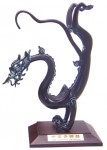 Dragon is a symbol of the Chinese nation. In history, the dragon of the Chinese nation as a common object of worship, God, art image, communicate a vast land of China from different nationalities, people of different faiths relations, the promotion of the nation’s mutual understanding and unity, the integration of different cultural unity has played a positive role. A long history and colorful culture of DRAGON, in traditional Chinese culture holds an extremely important position, are a symbol of Chinese traditional culture-Chinese bronze artworks.
Dragon is a symbol of the Chinese nation. In history, the dragon of the Chinese nation as a common object of worship, God, art image, communicate a vast land of China from different nationalities, people of different faiths relations, the promotion of the nation’s mutual understanding and unity, the integration of different cultural unity has played a positive role. A long history and colorful culture of DRAGON, in traditional Chinese culture holds an extremely important position, are a symbol of Chinese traditional culture-Chinese bronze artworks.
This bronze sculpture features a Chinese dragon standing on two front legs as if it were diving down in the air. In contrast to western counter part, the Chinese dragon is a snake-like creature has two horns and four claws. This bronze sculpture is an earlier version of the Chinese dragon which has a standout tail and no scales. The replica is well made, the dragon can balance itself with just two front claws on a flat surface.
This small and complex, graceful posture dragon, reflecting the ancient division of the production of master mechanics right, this is for the great collection. More information, please visit here.
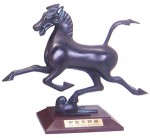 “The galloping horse with right hind foot on a swallow” is a famous cultural relic from the Eastern Han Dynasty (25 ~ 220). It is now the symbol of China tourism.
“The galloping horse with right hind foot on a swallow” is a famous cultural relic from the Eastern Han Dynasty (25 ~ 220). It is now the symbol of China tourism.
The neighing horse is galloping with its tail raised. Three of its hooves are in the air and its hind right hoof treads on a flying swallow which looks back in horror. Chinese ancient artisans combined realism and romanticism, and ingeniously integrated the galloping horse and flying swallow using rich imagination, original concepts and skillful craftsmanship. The romantic image of the swallow sets off the power and strength of the horse, instilling a rich, imaginative experience in viewers. Judging from the sculpture’s accurate balance, the gravity center must have been rigorously calculated. Mechanical analyses indicate that Bronze Galloping Horse finds a center of gravity in the swallow, which gives the statue its stability. Some experts also say this horse statue was used as a guide for finding the perfect steed.
 Qiang Pan (Qiang Plate) _ Chinese Bronze Vessel : Also known as Shi Qiang Pan (Shi Qiang Plate). Qiang is the first name of a person who is to the Western Zhou period, a historical officer of West Zhou.
Qiang Pan (Qiang Plate) _ Chinese Bronze Vessel : Also known as Shi Qiang Pan (Shi Qiang Plate). Qiang is the first name of a person who is to the Western Zhou period, a historical officer of West Zhou.
